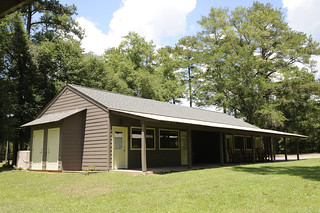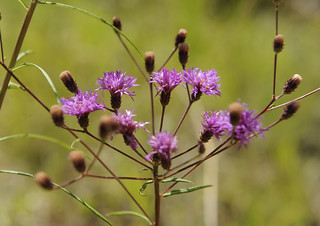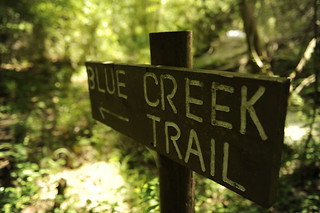Solon Dixon Center is a 5,300-acre 'gem'
Article body
Outside of the forestry and wildlife students who spend a sweltering few weeks in the summer learning field skills there, few at Auburn know about the Solon Dixon Forestry Education Center. Donated in 1979 to Auburn's School of Forestry and Wildlife Sciences by Solon Dixon, the diverse 5,300-acre property is located in Andalusia, Alabama, roughly a three-hour drive from Auburn's main campus. The School of Forestry and Wildlife Sciences owns and operates the center to advance the land-grant mission of instruction, outreach and research.
Leslie Goertzen, professor in the College of Sciences and Mathematics, and Curtis Hansen, a graduate student and curator at the Auburn University Museum of Natural History, spent four years getting to know the Dixon Center. They were approached by the center's director, Joel Martin, who wanted to know more about the non-tree plant species on the property, which straddles two counties and a multitude of habitats.
What they found astonished them. Although Goertzen and Hansen knew that the property was beautiful, they did not expect that their four-year comprehensive study would find more than 1,000 plant species. For perspective, that is one-quarter of all plant species in the entire state of Alabama on one property.
"We wanted to do this scientifically and comprehensively," Goertzen said, "to fully evaluate the diversity of things that occur there." This meant a total of 31 trips – multiple visits in each month over the course of those four years. He said that even so, they were identifying new species down to their last visit, because "If you've never been on this road in the second week of July, you would never see this plant."
As curator of Auburn's natural history museum, Hansen collected and preserved samples of every species they noted to document the finds. They collected samples from habitats such as longleaf plantation, hardwood forests, mixed forest, limestone outcrops and bogs. One surprise was that the most diverse areas were often those managed with sustainable forestry practices.
In addition to being an educational center, research site and working forest – the educational mission and operations are supported in part by timber sales – the property is available as a venue, including facilities for guest lodging.
Most recently, the new Solon and Martha Dixon Foundation Learning Center, a new presentation and meeting space, has enhanced the center's potential usefulness for groups around the state looking for conference or retreat space, especially in the natural resources community. One such group was a photography club that used the grounds for an intensive nature photography workshop, the results of which grace the walls of the new building.
The School of Forestry and Wildlife Sciences is proud of both the history and the incredible plant diversity on the Solon Dixon property. As Hansen said succinctly, "This is a gem that Auburn owns."
Related Media
Media interested in this story can contact Communications Director Preston Sparks at (334) 844-9999 or preston.sparks@auburn.edu.
Auburn University is a nationally ranked land grant institution recognized for its commitment to world-class scholarship, interdisciplinary research with an elite, top-tier Carnegie R1 classification, life-changing outreach with Carnegie’s Community Engagement designation and an undergraduate education experience second to none. Auburn is home to more than 30,000 students, and its faculty and research partners collaborate to develop and deliver meaningful scholarship, science and technology-based advancements that meet pressing regional, national and global needs. Auburn’s commitment to active student engagement, professional success and public/private partnership drives a growing reputation for outreach and extension that delivers broad economic, health and societal impact.







